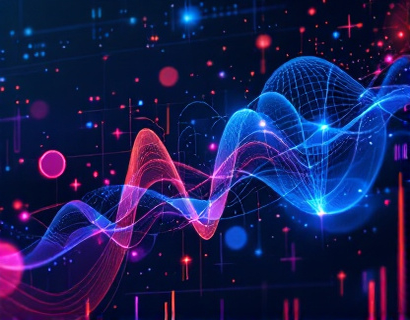Optimize Communication: A Comprehensive Guide to Multi-Platform Time-Based Notifications for Professionals and Organizations
In today's fast-paced work environment, effective communication is crucial for the success of professionals and organizations. One key aspect of enhancing communication is implementing a robust notification system that can deliver timely updates across multiple platforms. This guide delves into the benefits of a versatile alert solution designed to support both universal and block time-based schedules, ensuring that important notifications are never missed. By optimizing your communication strategy with a state-of-the-art notification system, you can elevate productivity and organization, staying ahead of the curve in a competitive landscape.
Understanding the Importance of Time-Based Notifications
Time-based notifications play a vital role in keeping teams and individuals informed about critical updates and deadlines. These notifications can be categorized into two main types: universal time-based notifications and block time-based reminders. Universal time-based notifications are sent at specific intervals, such as every hour or every day, regardless of the time zone. This ensures that all team members receive updates at consistent intervals, fostering a sense of routine and predictability. On the other hand, block time-based reminders are scheduled for specific time blocks, allowing for more flexible and context-aware notifications. For instance, a reminder might be set to trigger every morning at 9 AM or every Friday at 2 PM, aligning with the natural rhythms of work schedules.
Benefits of a Multi-Platform Notification System
A multi-platform notification system offers numerous advantages over traditional methods. First and foremost, it ensures that notifications reach team members through their preferred channels, whether it's email, SMS, push notifications, or in-app alerts. This flexibility increases the likelihood that important messages are seen and acted upon promptly. Additionally, a comprehensive notification system can integrate with various tools and platforms, such as project management software, calendar apps, and communication platforms, creating a seamless workflow. This integration reduces the need to switch between multiple applications, saving time and reducing cognitive load.
Enhancing Productivity with Timely Updates
Timely updates are essential for maintaining productivity and ensuring that projects stay on track. A well-designed notification system can significantly enhance productivity by providing real-time alerts for critical tasks and deadlines. For example, a project manager can set up notifications to alert the team when a task is due or when a milestone is approaching. This proactive approach helps prevent last-minute rushes and ensures that everyone is aware of their responsibilities. Moreover, automated reminders for recurring tasks, such as weekly reports or monthly reviews, can be scheduled to trigger at the same time each week, reducing the risk of oversight and ensuring consistency.
Supporting Collaboration and Communication
Effective collaboration is another key benefit of a multi-platform notification system. When team members receive timely and relevant notifications, they can stay informed about ongoing projects and changes in real-time. This transparency fosters better collaboration and reduces misunderstandings. For instance, a notification system can alert team members when a new comment is added to a document or when a task is assigned to them, ensuring that everyone is on the same page. Additionally, notifications can be used to facilitate cross-departmental communication, breaking down silos and promoting a more cohesive work environment.
Customizing Notifications for Different Needs
One of the strengths of a versatile notification system is its ability to cater to different needs and preferences. Users can customize the frequency, content, and delivery method of notifications to suit their specific requirements. For example, a team member might prefer to receive daily summaries of project updates via email, while another might opt for real-time push notifications on their mobile device. This level of customization ensures that each team member receives notifications in a way that works best for them, enhancing overall satisfaction and engagement.
Implementing Block Time-Based Reminders
Block time-based reminders offer a more nuanced approach to notification scheduling. These reminders are set to trigger at specific times within a defined block, allowing for greater flexibility and context awareness. For instance, a reminder can be scheduled to go off every morning at 9 AM, but only if the user is not already in a meeting or busy with a high-priority task. This feature helps prevent notifications from being disruptive or intrusive, ensuring that team members can focus on their work without constant interruptions. By aligning notifications with natural work rhythms, block time-based reminders can improve the overall user experience and reduce stress.
Ensuring Reliability and Consistency
Reliability is a critical factor in any notification system. Professionals and organizations rely on notifications to stay informed and on schedule, and any failures can have significant consequences. A robust notification system must be designed to handle high volumes of messages without dropping or delaying notifications. This requires scalable infrastructure, efficient algorithms, and robust testing protocols. Additionally, the system should provide clear feedback and logging to help identify and resolve any issues quickly. Consistency in notification delivery is equally important, ensuring that team members can trust the system to function as expected every time.
Integrating with Existing Workflows
Seamless integration with existing workflows is essential for the successful adoption of a multi-platform notification system. The system should be compatible with a wide range of tools and platforms, including popular project management tools like Asana and Trello, calendar applications like Google Calendar and Microsoft Outlook, and communication platforms such as Slack and Microsoft Teams. By integrating with these tools, the notification system can leverage existing workflows, reducing the need for additional setup and training. This integration also ensures that notifications are contextually relevant, enhancing their effectiveness and reducing noise.
Mobile Optimization for On-the-Go Access
In today's mobile-first world, access to notifications on-the-go is crucial. A comprehensive notification system must be optimized for mobile devices, ensuring that team members can receive and respond to alerts regardless of their location. Mobile notifications should be concise and actionable, providing quick access to the necessary information or next steps. Push notifications, in particular, are effective for urgent alerts, while in-app notifications can offer more detailed updates. By ensuring mobile optimization, the system supports a continuous workflow, allowing team members to stay connected and productive from anywhere.
Data-Driven Insights and Analytics
Beyond just delivering notifications, a advanced notification system can provide valuable data-driven insights and analytics. These insights can help organizations and professionals understand how notifications are impacting their workflows and identify areas for improvement. For example, analytics can track open rates, response times, and engagement levels for different types of notifications, providing insights into what works best for the team. This data can be used to refine notification strategies, optimize scheduling, and enhance overall communication effectiveness. By leveraging analytics, organizations can make informed decisions and continuously improve their communication practices.
Security and Privacy Considerations
Security and privacy are paramount when implementing a multi-platform notification system. Sensitive information should be handled with care, and notifications should comply with relevant data protection regulations such as GDPR and HIPAA. The system should include robust security measures, such as encryption for data in transit and at rest, secure authentication methods, and regular security audits. Additionally, users should have control over their notification preferences and the ability to manage their data privacy settings. By prioritizing security and privacy, organizations can build trust and ensure compliance with legal requirements.
Case Studies and Real-World Applications
To illustrate the practical benefits of a multi-platform notification system, let's consider a few real-world applications. In a large software development company, the implementation of a notification system integrated with Jira and Slack led to a significant reduction in project delays. Team members received timely updates on task assignments and deadlines, allowing them to stay on track and collaborate more effectively. In a healthcare organization, a notification system that integrated with electronic health records (EHR) ensured that medical staff received critical alerts about patient conditions and treatment plans in a timely manner, improving patient care and safety. These case studies demonstrate the tangible impact of a well-designed notification system on productivity and efficiency.
Conclusion
In conclusion, optimizing communication through a multi-platform, time-based notification system is a powerful strategy for professionals and organizations looking to enhance productivity and organization. By providing timely, context-aware updates across various channels, such a system ensures that important notifications are never missed. Whether through universal time-based notifications or block time-based reminders, the flexibility and customization options offered by these systems cater to diverse needs and workflows. As organizations continue to navigate the challenges of a fast-paced, interconnected world, investing in a robust notification system is a step towards staying ahead of the curve and achieving greater success.










































